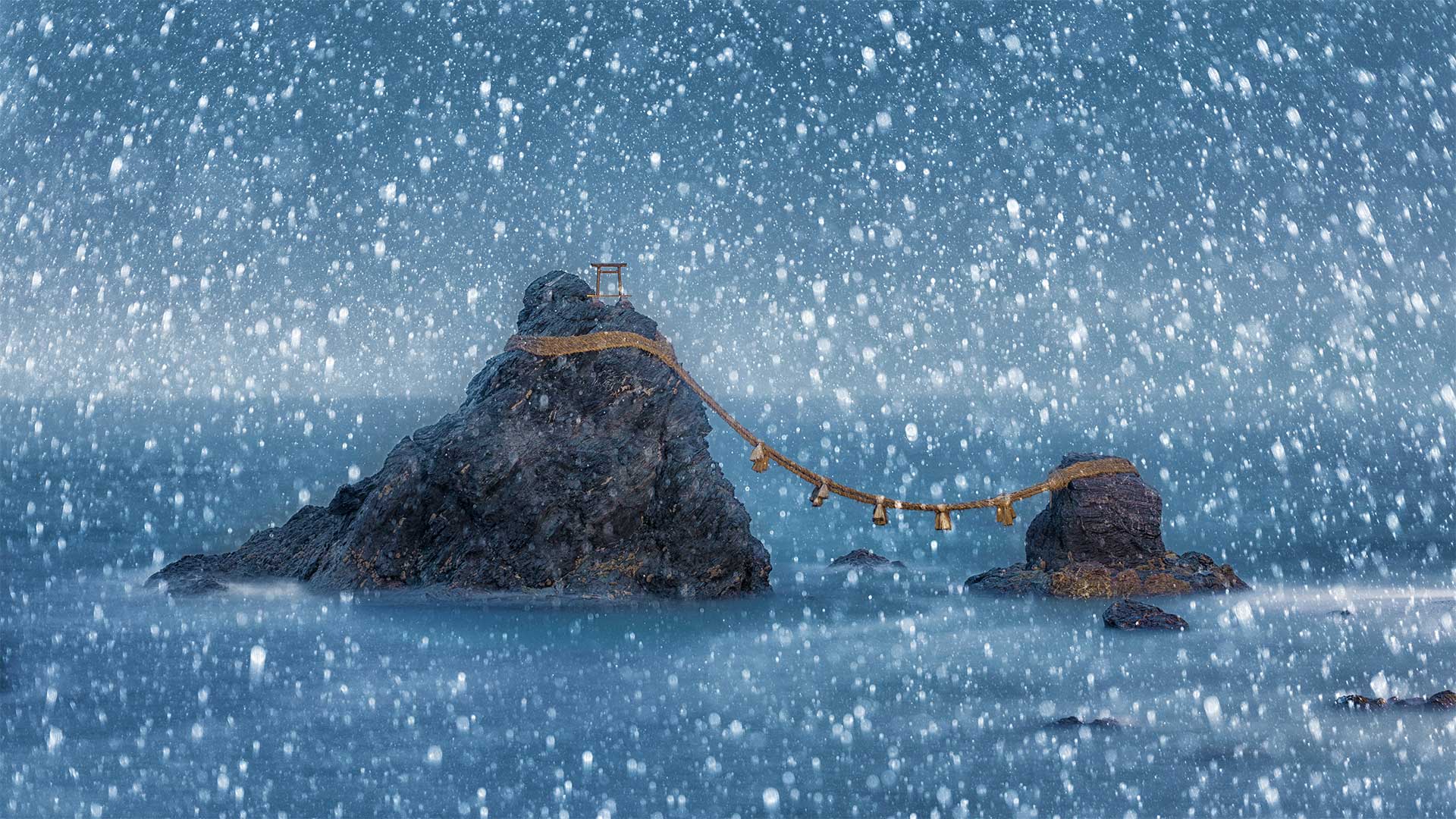海岸旁的二见浦夫妇岩,日本三重县 Meoto Iwa (Wedded Rocks) off the coast of Ise, Mie Prefecture, Honshu, Japan (© Marco Gaiotti/plainpicture)

海岸旁的二见浦夫妇岩,日本三重县 Meoto Iwa (Wedded Rocks) off the coast of Ise, Mie Prefecture, Honshu, Japan (© Marco Gaiotti/plainpicture)
Wedded Rocks, Japan
Just off the shore of the city of Ise, in the southern-central region of Japan's main island, Honshu, two rocks represent a sacred union between a divine couple. Known collectively as Meoto Iwa (Wedded Rocks), these sea stacks represent Izanagi and Izanami, the married brother-and-sister deities who created the islands of Japan and its gods in Japanese mythology. The large rock on the left is said to be the husband, Izanagi–at its peak is a small torii, a symbolic gateway marking the entrance to a Shinto shrine. The smaller rock represents his wife, Izanami.
The smitten sea stacks are joined together in matrimony by a thick rope braided of rice straw called 'shimenawa,' which is used as a symbol of purity and protection in the Shinto religion. The sacred rope is replaced in a special ceremony, held three times each year during the months of May, September, and December. The best time to see the rocks is at dawn during summer or twilight in winter, when the sun and moon, respectively, rise between them. If the weather is clear and the gods are on your side, you might even catch a glimpse of Mount Fuji in the distance. But we think it's just as beguiling with heavy snowflakes gently falling all around.
婚礼岩石,日本
离日本本州岛中南部的伊瑟市不远,两块岩石代表着一对神圣的夫妻之间的神圣结合。这些海堆被统称为Meoto Iwa(Wedded Rocks),它们代表了在日本神话中创造了日本岛屿及其诸神的已婚兄弟姐妹神Izanagi和Izanami。左边的大石头据说是丈夫Izanagi——山顶上是一个小牌坊,一个象征性的大门,标志着神社的入口。较小的岩石代表他的妻子伊扎纳米。
被击倒的海垛在婚礼上由一根由稻草编织而成的粗绳连接在一起,称为“shimenawa”,在神道教中被用作纯洁和保护的象征。在每年5月、9月和12月举行的三次特殊仪式中,更换神圣绳索。观赏这些岩石的最佳时间是夏季的黎明或冬季的黄昏,此时太阳和月亮分别从它们之间升起。如果天气晴朗,众神在你身边,你甚至可以瞥见远处的富士山。但我们认为,这和四周轻轻飘落的厚厚的雪花一样迷人。
评论已关闭